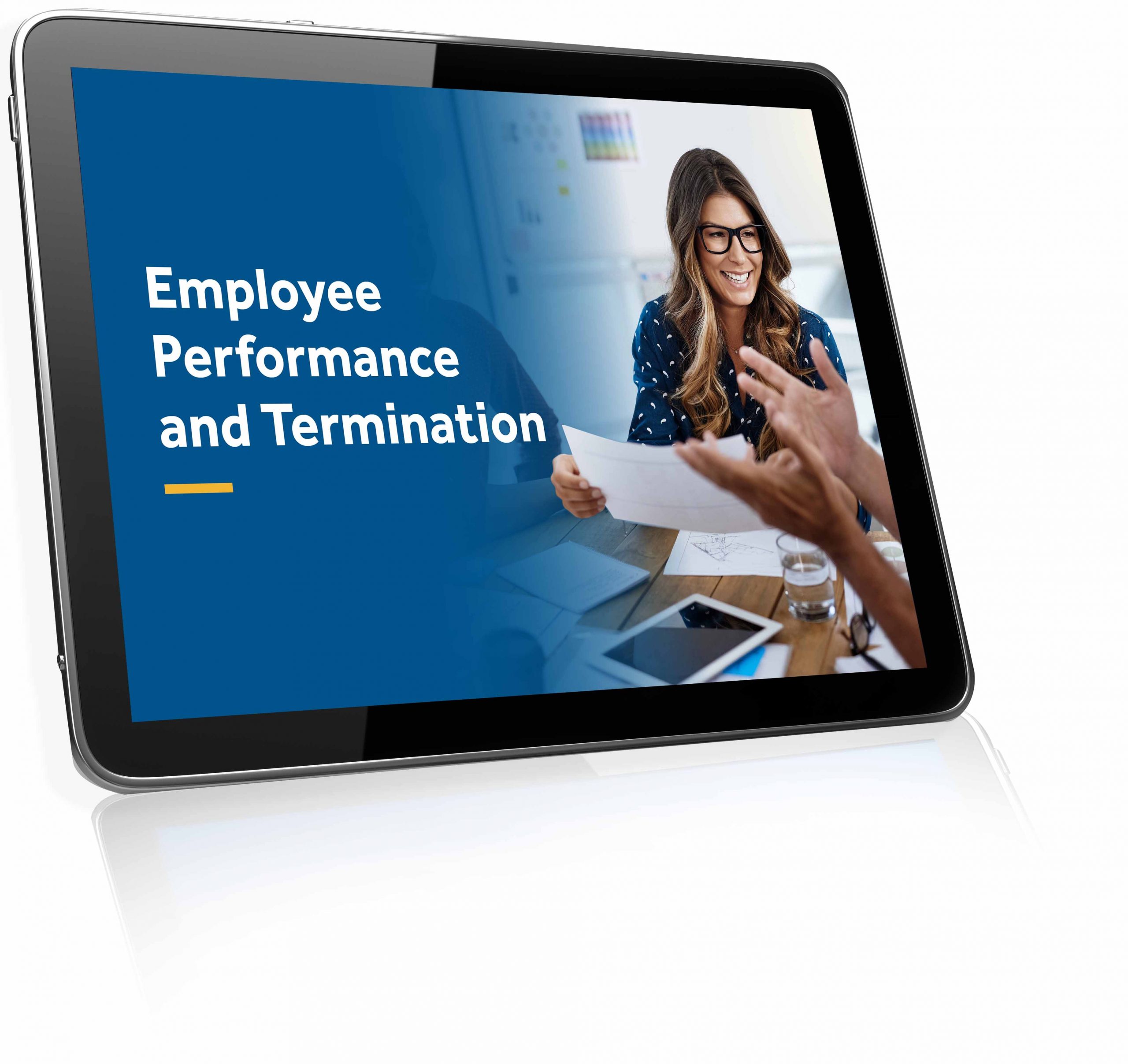
If you decide to end your employee’s employment you need to know when and how to end it.
If the employee is employed under the National Workplace Relations System, then you need to abide by the National Employment Standards (NES) as well as any industrial instruments governed by the Fair Work Act 2009 (the Act). This means you need to consider any applicable award or registered agreement, as well as the employee’s employment contract.
Below are a few tips for terminating your employee in accordance with the Act.

Handle employee performance and termination the right way with our FREE E-Guide.
Managing staff termination can be a challenge for employers, and unfair dismissal claims often have serious consequences. This E-Guide provides assistance for business owners who are navigating this tricky situation.
1. Check How Long the Employee Has Been Employed
The Minimum Employment Period depends on the amount of time the employee has worked in the business and the size of the business. If an employee has been employed for longer than the appropriate minimum period, they may have access to an unfair dismissal claim if you terminate their employment. If you end their employment before they have access to a claim, you should talk to the employee and give them the correct notice of their final day in writing.
2. Talk To The Employee
Awards and registered agreements require you to consult with the employee before any major workplace change, which includes ending their employment. You should give them a reason why their employment is being terminated. Any number of reasons for dismissal may be valid if the employee does not have access to an unfair dismissal claim, as long as they are not protected reasons under the Act – the termination must not be because of a workplace right, industrial action or discrimination, for example.
3. Put It In Writing
An employer should give the employee notification in writing of the last day of their employment which should include the appropriate amount of notice as per their contract, award or registered agreement.
4. Check For Notice
The amount of notice you give an employee usually depends on how long they have been with the business, but not all employees get notice. If they do, they can work it, or you can pay it to them as if they worked it.
5. Notice And Leave
An employee can request to take annual leave during their notice period as long as they follow the normal annual leave request process, and the employer agrees, in which case the notice period will continue to run, but the employee will be paid annual leave if they have any left. Normal sick leave procedures will also apply.
Additional Resource
Get Workplace Advice Now
Call Our Team of Expert Advisers Who Will Help You with Your Workplace Questions.
6. Make Sure The Process Is Fair
If you terminate an employee outside the minimum period of employment, it is important to follow a fair process before ending the employment, and make sure that you are only dismissing employees for valid reasons. If you do not, employees may have grounds for a claim of unfair dismissal.
7. Have Valid Reasons
Valid reasons for termination are required as well as a fair process for an employee who has access to unfair dismissal. Valid reasons may include:
Capacity – if the employee lacks the ability, or is incapable, of completing the inherent requirements of their role;
Performance – if the employee’s skill level or quality of work is below what is required for the job, or if they are not meeting the standards outlined in their employment contract due to a lack of care or diligence;
Misconduct – when an employee partakes in behaviour that is against company policy or contrary to the terms of their employment contract, or is unlawful;
Redundancy – when an employer either decides they no longer need an employee’s job to be done by anyone, or the employer becomes insolvent or bankrupt. BrightHR’s Redundancy Navigator can help you through this process.
8. Dismissal Without Notice
This is essentially termination for serious misconduct as defined in the Act and accompanying regulations, which is only appropriate in limited circumstances. If ending the employment summarily, the employer will not be required to provide an employee with a period of notice or payment of notice in lieu, though a fair process and written notification to the employee that their employment has been terminated are still required.
9. Check Final Pay
The employer should pay out any wages owing, and any unused annual leave, as well as notice (if applicable) as part of the employee’s final pay, but there may be additional entitlements that need to be paid, for example long service leave or redundancy pay.
10. Keep Records
You must keep records of the ex-employee’s employment, particularly time and wages records, for seven years. You can store employee profiles, wage and time records and related documents securely in the cloud with BrightHR, offered as part of the Employsure services.
Please call our 24/7 Advice Line now on 1300 237 563 to better understand your obligations when ending employment.
The information in the above article has been compiled on the basis of general information current at the time of publication. Please note that the contents of this article and website and any information provided by our Help Line do not constitute legal advice and are not intended to be a substitute for legal or other professional advice and should not be relied upon as such. Your specific circumstances or changes in circumstances after publication may affect the completeness or accuracy of this information. You should seek legal advice or other professional advice in relation to any particular matters you or your organisation may have.
